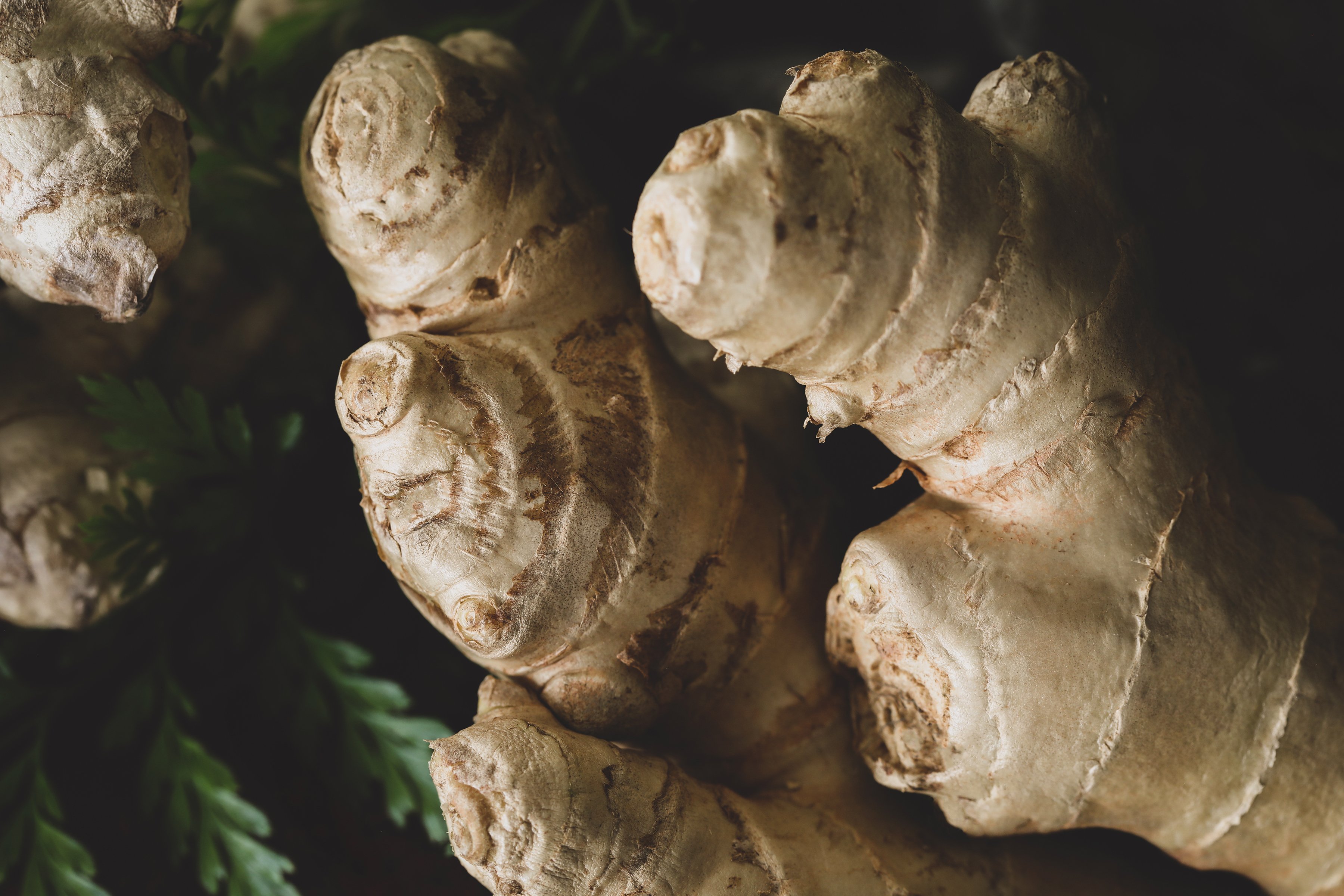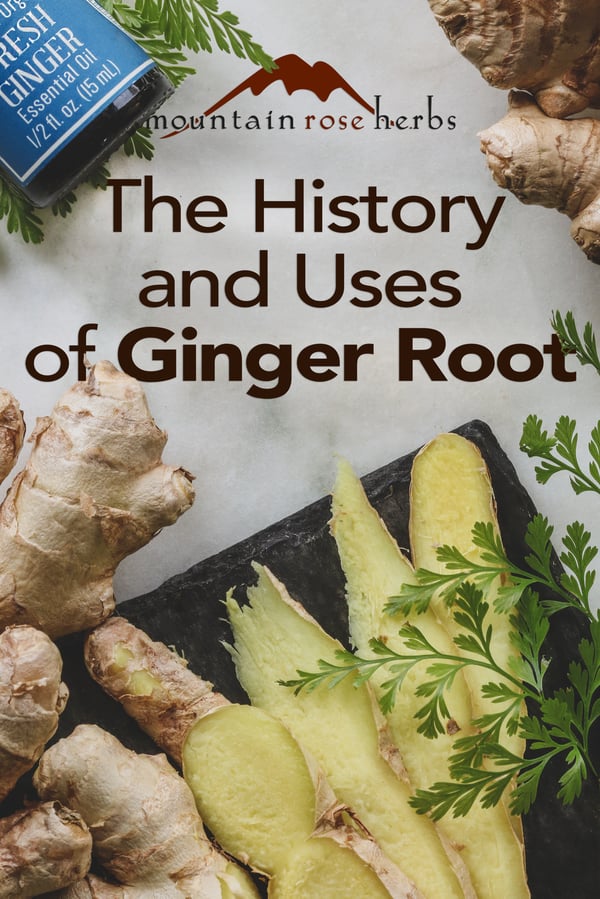Have you ever asked yourself, “What herbs and spices would I bring to a desert island?” It’s a fun exercise to think about what you can’t live without. Salt, nettles, and ginger root top my list! Ginger root’s warm, spicy flavor makes the perfect addition to Thai and Indian dishes. It also uplifts healthful tea and drink recipes, like this Turmeric Ginger Tea. Ginger root (Zingiber officinale) supports healthy digestion and helps relieve occasional upset stomach and nausea.* Making a simple ginger root tea when I was pregnant really helped me stay grounded. I think of ginger as this wonderous plant ally, but it wasn’t until recently that I researched the history and cultivation of it. Now I have a renewed love of ginger!
Cultivation
The ginger plant is grown for its rhizomes, not technically a root but similar. Rhizomes, also known as rootstalks, are the main stem of the plant but instead of growing above ground, they grow horizontally underground. The main active compound in ginger is gingerols, a phytochemical which is responsible for its pungent fragrance and zesty flavor. Ginger is a tropical, perennial herb native to Asia. But due to its popularity, ginger is now grown on every continent (except Antarctica of course). It can be cultivated in warm, humid climates like southern Texas, Louisiana, and California’s Central Valley, among other places in the U.S.
At Mountain Rose Herbs, our dried ginger often comes from small farms in Peru. Farmers plant in the spring and leave the rhizome to grow in the wild forest until harvest, sometime around August. Ginger is a shade-loving plant, so it grows well surrounded by diverse plant species that grow up around it. After harvest, the fresh ginger is transported to a washing facility where its cleaned, graded for quallity, re-cleaned, and air-dried. From there, some of the ginger gets turned into the ginger root powder that you may find in your kitchen spice cabinets.
History
Ginger has been a staple in homes for a very long time. First seen in ancient Sanskrit and Chinese texts around 400 B.C.E and 2,000 B.C.E. respectively, ginger has been used in a multitude of traditional medicines for millennia. There are records of ginger being exported from India to Europe, and from there to other parts of the world. Ginger has been used for thousands of years in Traditional Chinese Medicine (TCM) and is believed to support lung, spleen, heart, and stomach meridians. As I learned in Jiling Lin’s blog, How to Use TCM Herbs for Nourishing Soups, dried ginger, which is the older winter rhizome, is considered hotter and more drying while fresh ginger is warmer and more moistening. Such wonderfully different energetics within the same plant!
Culinary and Herbal Preparations with Ginger
There are a host of recipes that rely on the digestive support and vibrant flavors of ginger. Here are some of my favorites:
- Miso Ginger Soup with Vegan Dashi Recipe
- Shiitake Ginger Broth
- Homemade Hop Ginger Brew
- Ginger Spirulina Lemonade
- Ginger Cranberry Shrub Cocktail
- Ginger Palmer Mocktail
- Elderberry Syrup with Ginger for Immune System Support
- Traditional Fire Cider + 2 Tangy Twists
Body Care and Aromatherapy Recipes with Ginger
While I am most drawn to using ginger in culinary recipes, there are also many body care and aromatherapy recipes that can open you up to fun new ways to enjoy this useful root. Ginger offers a warming sensation to the skin, making it helpful for improving circulation. Its scent is also invigorating and can be found in many aromatherapy recipes and products. Here are some blogs and recipes that utilize ginger for external use.
- DIY Ginger & Citrus Body Spray Recipe
- Ginger Cookie DIY Lip Balm Recipe
- Ginger and Bourbon Beard Oil Recipe
- Pumpkin Spice Essential Oil Blend
- Blending Custom Fragrances with Ginger
Looking to learn more about herbs?
Explore the Power of Slippery Elm Bark!
You may also enjoy:
- Marshmallow: A Fluffy Food and Soothing Remedy
- Guide to Basic Herbal Actions
- Understanding Nervines and Adaptogens
*These statements have not been evaluated by the Food and Drug Administration. These products are not intended to diagnose, treat, cure, or prevent any disease. We recommend that you consult with a qualified healthcare practitioner before using herbal products, particularly if you are pregnant, nursing, or on any medications. For educational purposes only.













